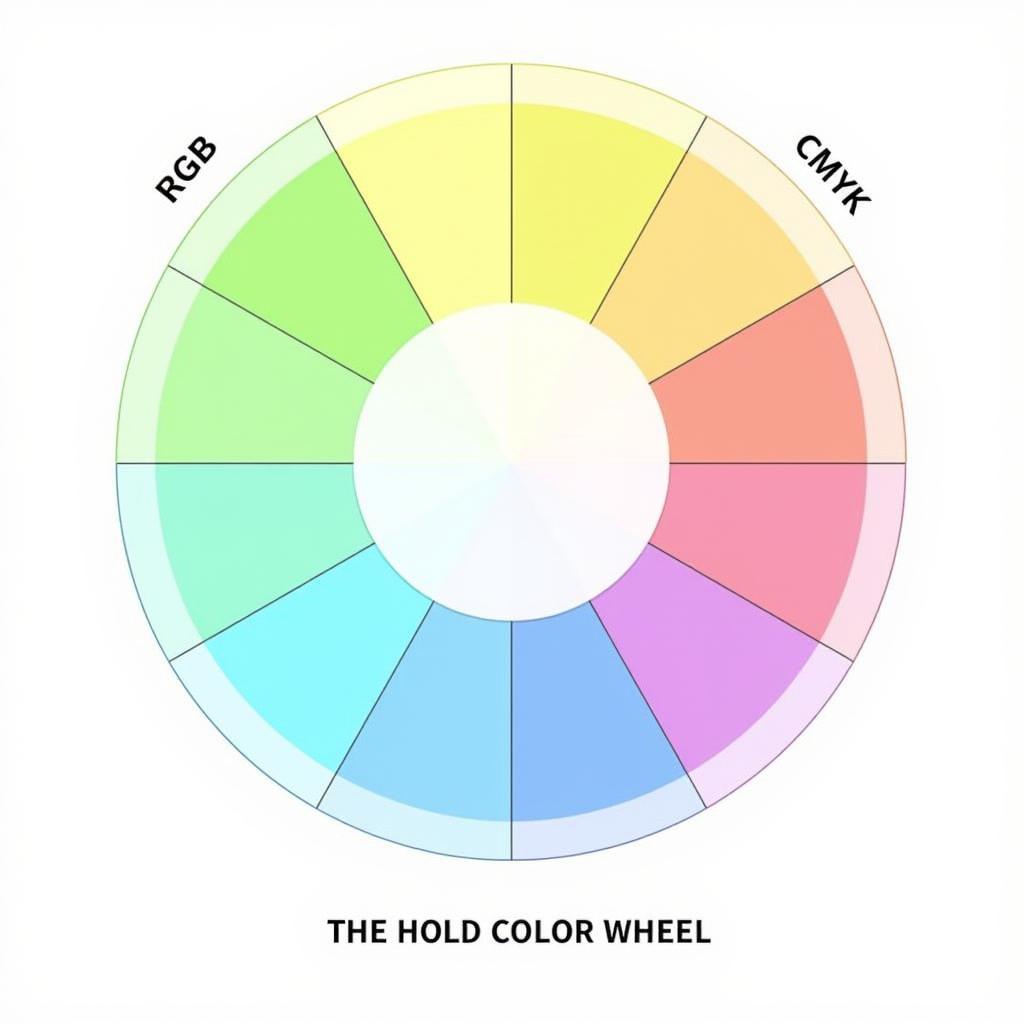Understanding how color works is crucial for anyone interested in design, art, or even just appreciating the visual world around us. It’s a fascinating interplay of physics, biology, and psychology. This guide dives deep into the mechanics of color, exploring its various facets and how they influence our perceptions.
The Science Behind Color Perception
How do we actually see color? It all begins with light. Light, a form of electromagnetic radiation, travels in waves. These waves have different lengths, and the length of a light wave determines the color we perceive. Our eyes contain specialized cells called cones, which are sensitive to different wavelengths of light. When light hits an object, some wavelengths are absorbed, and others are reflected. The reflected wavelengths are what our eyes detect, and our brain interprets them as color.
The Role of Light
Light is the fundamental element of color. Without light, there is no color. Think of entering a dark room – everything appears black because there’s no light to be reflected. how do fireworks get their color demonstrates how different chemicals emit different colored light when ignited. The colors we see are simply the different wavelengths of light that are not absorbed by the object.
What determines the color of an object? The object’s chemical composition and physical structure determine which wavelengths of light are absorbed and which are reflected. For instance, a red apple absorbs all wavelengths except those in the red portion of the spectrum, which are reflected back to our eyes.
The Color Wheel and Color Models
The color wheel is a visual representation of colors, arranged according to their relationships. It’s a valuable tool for understanding color harmonies and creating visually pleasing combinations. There are various color models, each serving a different purpose.  Comparison of RGB, CMYK and HSV Color Models
Comparison of RGB, CMYK and HSV Color Models
RGB, CMYK, and HSV
-
RGB (Red, Green, Blue): This model is used for digital displays, like your computer screen or television. It’s an additive model, meaning colors are created by combining red, green, and blue light.
-
CMYK (Cyan, Magenta, Yellow, Black): This model is used for printing. It’s a subtractive model, meaning colors are created by subtracting cyan, magenta, yellow, and black inks from white paper.
-
HSV (Hue, Saturation, Value): This model is often used for color selection in design software. It’s based on the perception of color and allows for intuitive adjustments of hue, saturation, and brightness. when did networks start showing programs in color highlights the historical shift in how color was utilized in media.
The Psychology of Color
Color has a profound impact on our emotions and perceptions. Different colors evoke different feelings and associations, which can be utilized in design to create specific moods and atmospheres.
Color and Emotion
- Red: Often associated with passion, energy, and excitement.
- Blue: Often associated with calmness, trust, and stability.
- Green: Often associated with nature, growth, and harmony. what makes fireworks different colors provides further insights into how different elements influence color perception.
“Color is a powerful tool that can be used to evoke specific emotions and create a desired atmosphere,” says renowned color psychologist, Dr. Anya Sharma.
Applying Color Knowledge in Design
Understanding how color works is essential for effective design. Whether you’re designing a website, a room, or a piece of artwork, a strong grasp of color principles will allow you to create visually appealing and impactful creations. are fireworks banned in colorado 2024 shows how color perception even affects policy decisions regarding firework displays.]
“Effective color usage can make or break a design. It’s not just about aesthetics; it’s about communicating effectively and creating a cohesive experience,” adds design expert, Mr. David Lee. what color is your parachute worksheets offers a practical approach to using color in career exploration and planning.]
Conclusion
How color works is a complex yet fascinating subject. From the physics of light to the psychology of perception, color plays a vital role in our lives. By understanding the principles of color, we can unlock its potential to enhance our visual experiences and create truly captivating designs.
FAQ
- What is the visible light spectrum?
- How do our eyes perceive color?
- What are the different color models?
- How does color affect our emotions?
- How can I use color effectively in design?
- What is the difference between additive and subtractive color mixing?
- How does color temperature affect the perceived color?
Need support? Contact us at Phone Number: 0373298888, Email: [email protected] or visit us at 86 Cầu Giấy, Hanoi. We have a 24/7 customer support team.
